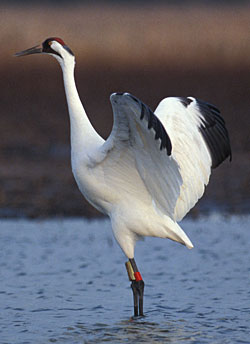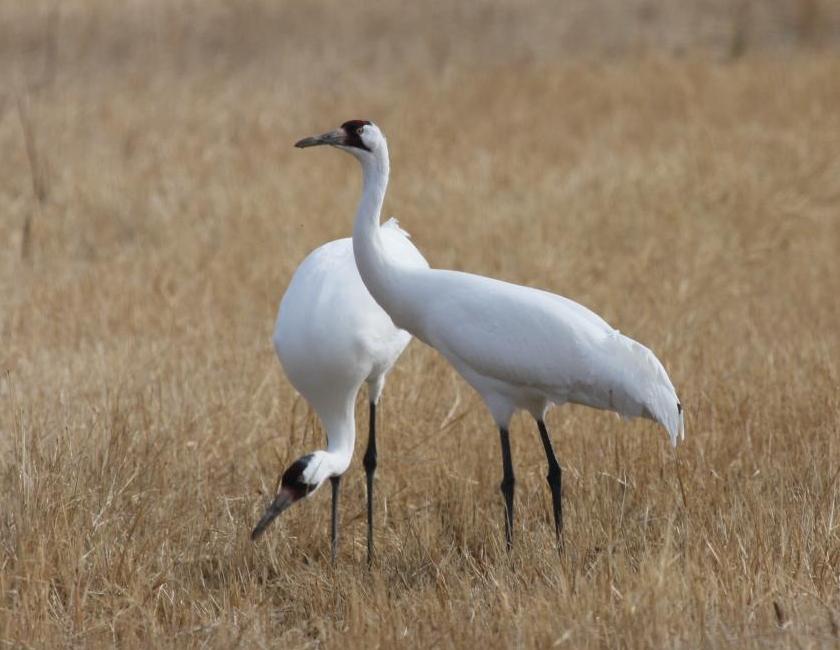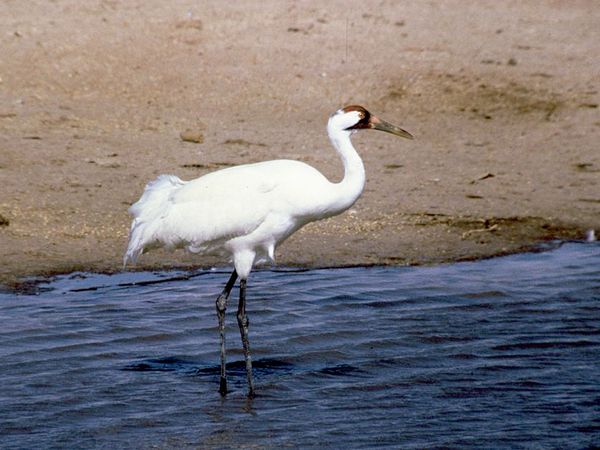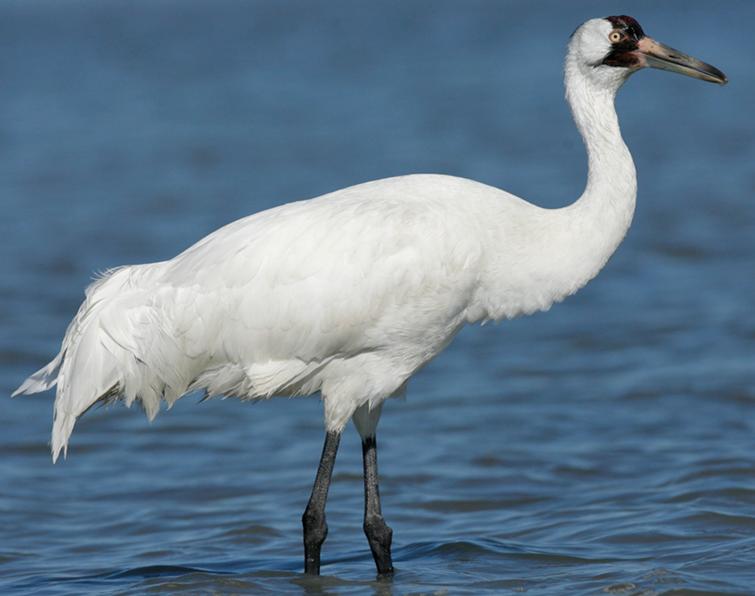
Grus americana
SUBFAMILY
Gruinae
TAXONOMY
Ardea americana Linnaeus, 1758, Hudson Bay, Canada. Monotypic.
OTHER COMMON NAMES
English: Whooper, big white crane; French: Grue blanche;
German: Schreikranich; Spanish: Grulla Trompetera.
PHYSICAL CHARACTERISTICS
Height 5 ft (150 cm), wingspan 7–8 ft (200–230 cm). Weight:
male 16 lb (7.3 kg), female 14 lb (6.4 kg). White with black
wingtips, legs, and feet; black facial markings; and a bare patch
of red skin on its head.
DISTRIBUTION
Wood Buffalo National Park in west-central Canada; winters
at Aransas National Wildlife Refuge on the Gulf Coast of
Texas.
HABITAT
Currently use ponds and marshes; historically used potholes
and other wetlands of North American plains and prairies.
Winter habitat includes coastal marshes.
BEHAVIOR
Wild flock is migratory, as well as an experimental flock in the
Rocky Mountains. An experimental flock in Florida is nonmigratory,
and has dispersed from its original release area.
FEEDING ECOLOGY AND DIET
Omnivorous, its diet includes blue crabs, small fish, rodents,
berries, tubers, grain, insects, and other invertebrates.
REPRODUCTIVE BIOLOGY
Whooping cranes are monogamous. Both parents take turns
incubating two eggs for a period of 29–30 days. Both eggs may
hatch, but usually only one chick survives the first few months
to reach fledging age.
CONSERVATION STATUS
Endangered, and listed on CITES Appendix I.
SIGNIFICANCE TO HUMANS
After near extinction and subsequent precarious recovery, it has
become a symbol of conservation in North America.
Other popular Animals
Photo Gallery of - Whooping crane




 Animalia Life
Animalia Life